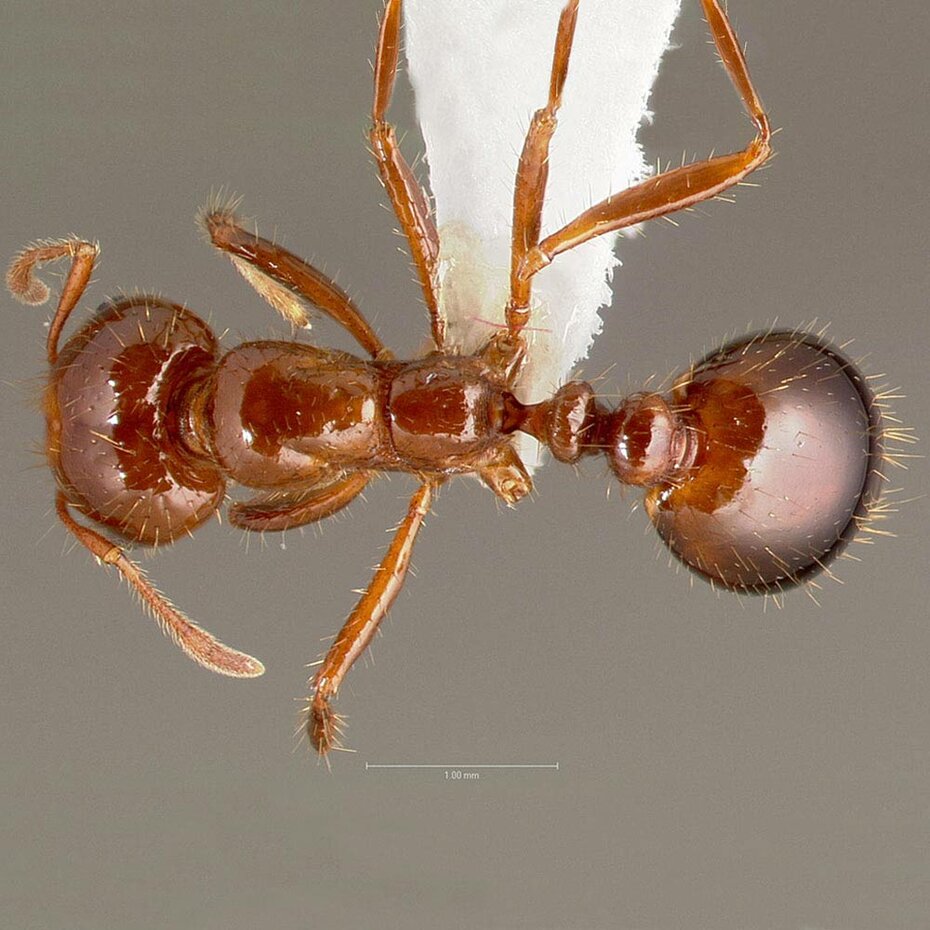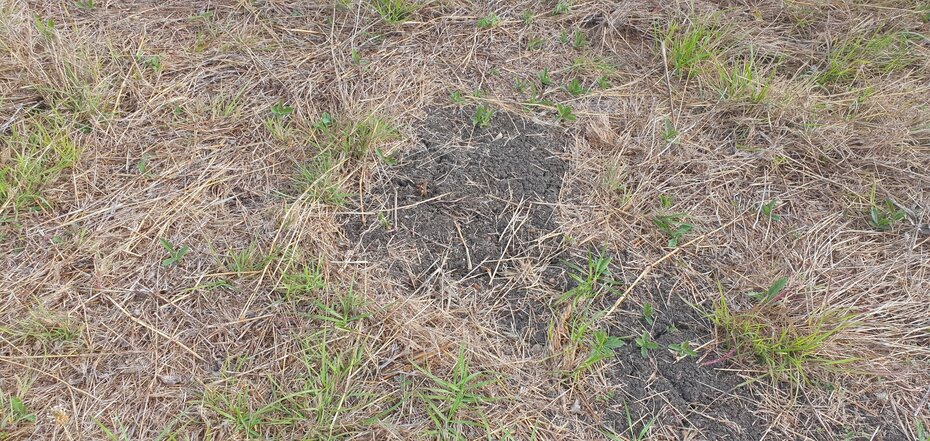Despite extensive attempts spanning over two decades, eradication has remained elusive, with the potential for a widespread outbreak posing grave risks to agriculture, native biodiversity, and public health. Estimates suggest that such an outbreak could incur annual costs of up to $2 billion.
Challenge
CDI Pest Management, under the leadership of Marshall Blacklock, confronted a substantial fire ant infestation covering 872 square meters. Prompt assessments revealed 63 nests, each housing numerous smaller colonies. This was just a small portion of a large 500,000+ square meter property.
Traditional methods of nest treatment, involving manual spearing and injecting, would have demanded extensive labour, substantial chemical usage, and incurred costs exceeding $2,100, along with considerable physical strain on workers.
Moreover, the ideal treatment window for fire ant control is spring and early summer to maximise results, however, these seasons also bring rain, causing problems with the baiting treatment method, as rain destroys the bait.
Solution
In partnership with Sundew Solutions, CDI Pest Management developed the Rapid Response Large Area Treatment approach. This innovative method utilised Sundew's ANTagonistPRO, a rain fast, polymer-enhanced product, particularly effective against Tramp Ant species.
Applied via specialised and modified boom spray equipment, CDI Pest was able to integrate two different knowledge bases to create one innovative solution. This resulted in a highly efficient and targeted application method to address infestations across expansive and diverse terrain.
Implementation
Implementing the Rapid Response Large Area Treatment technique enabled CDI Pest Management to treat the infested area swiftly and effectively within 15 minutes. Utilising boom spray equipment from the comfort of an air-conditioned vehicle, efficiently applying ANTagonistPRO, significantly reducing labour hours and chemical usage compared to traditional methods.
Outcome
The results were remarkable, with complete nest destruction achieved within 28 days, despite encountering significant rainfall just 48 hours post-application. As of February 13, 2024, the treated site remains entirely free of fire ants, despite receiving a total rainfall of 625.4ml.
Conclusion
The success of the Rapid Response Large Area Treatment technique underscores its superiority over conventional methods. Through strategic collaboration between CDI Pest Management and Sundew Solutions, this innovative approach has demonstrated its efficacy in swiftly and economically addressing large-scale fire ant infestations.
Such advancements hold promise for reshaping future control strategies, ensuring the protection of communities from this persistent biosecurity threat.






